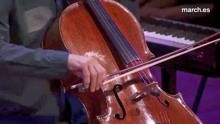Content:
Fishing is an ancient and cherished activity that has been enjoyed by people all around the world for centuries. Whether you're a seasoned angler or a beginner, the allure of the river bank remains the same. The tranquil surroundings, the rhythmic sound of the water, and the anticipation of catching a fish are all reasons why river bank fishing is so popular. In this article, we will delve into the world of river bank fishing, providing you with essential tips and techniques to help you master this captivating pastime.
Choose the Right Location
Selecting the right location is crucial for a successful river bank fishing experience. Look for areas with a good population of fish, such as deep pools, shallow riffles, or slow-moving currents. These areas often offer abundant food sources and provide ideal spots for fish to rest and feed.
1 Deep Pools
Deep pools are perfect for catching larger fish, such as trout and bass. These areas are often found below waterfalls, dams, or at the confluence of rivers. Fish tend to congregate in these spots to rest and feed on the abundant food supply. To fish in deep pools, cast your line upstream and let it drift back into the pool. Adjust your presentation to match the natural movement of the water.
2 Shallow Riffles
Shallow riffles are ideal for catching smaller fish, such as panfish and minnows. These areas are characterized by fast-moving water and are often found in the middle of the river. To fish in shallow riffles, cast your line upstream and work it through the riffles with short, sharp movements. Use a light lure or fly to imitate the natural movement of small insects and fish.
3 Slow-Moving Currents
Slow-moving currents are excellent spots for catching a variety of fish, including catfish, carp, and eels. These areas are often found in the bends of rivers or behind rocks and logs. To fish in slow-moving currents, cast your line upstream and let it drift with the current. Adjust your presentation to match the natural movement of the water.
Select the Right Equipment
The right equipment can make a significant difference in your river bank fishing experience. Here are some essential items to consider:

1 Rod and Reel
Choose a rod and reel that are appropriate for the type of fish you're targeting. A lightweight rod and reel combination is ideal for catching smaller fish, while a heavier setup is better for larger species.
2 Line
Use a line that matches the weight of your rod and reel. Monofilament, fluorocarbon, and braided lines are all viable options, each with its own advantages. Monofilament is flexible and floats well, fluorocarbon is nearly invisible to fish and has excellent knot strength, and braided line is strong and has low stretch.
3 Lures and Baits
Select lures and baits that mimic the natural prey of the fish you're targeting. For example, use a streamer to imitate a leech or a nymph, or a spinnerbait to mimic a small fish. Live bait, such as worms or crickets, can also be effective, especially for catching larger fish.
Master the Art of Casting
Casting is a fundamental skill that can greatly impact your fishing success. Here are some tips to help you improve your casting technique:
1 Grip the Rod Properly
Hold the rod with a relaxed grip, allowing the weight of the rod to help you cast. Avoid gripping the rod too tightly, as this can cause tension and reduce your casting distance.
2 Practice Your Casting Technique
Practice casting in different directions and distances to improve your accuracy and control. Use a casting practice device, such as a casting net, to help you develop a consistent casting motion.
3 Pay Attention to the Wind
Wind can significantly affect your casting. To compensate for wind, cast into the wind and use a longer cast. Adjust your casting angle to account for the wind's direction and speed.
Read the Water
Understanding the flow and structure of the river can help you identify the best spots to fish. Here are some tips to help you read the water:
1 Observe the Water's Surface
The water's surface can provide valuable information about the river's structure and fish activity. Look for areas with ripples, bubbles, or splashes, as these may indicate fish feeding or resting.
2 Analyze the River's Bottom
The river's bottom can reveal the types of fish present and their preferred habitats. Rocks, logs, and vegetation can provide excellent cover for fish, making them prime spots to fish.
3 Pay Attention to the River's Bend
River bends are often productive fishing spots, as they create a natural gathering area for fish. Fish tend to congregate in the outside bend of a river, where the current is slower.
Patience and Persistence
Lastly, remember that river bank fishing requires patience and persistence. Fish may not bite immediately, so be prepared to wait and adapt your technique as needed. Stay focused, and you'll be rewarded with the thrill of catching a fish.
In conclusion, river bank fishing is a rewarding and enjoyable activity that can be mastered with the right knowledge and skills. By choosing the right location, selecting the appropriate equipment, mastering the art of casting, reading the water, and practicing patience, you'll be well on your way to becoming a skilled river bank angler. Happy fishing!












